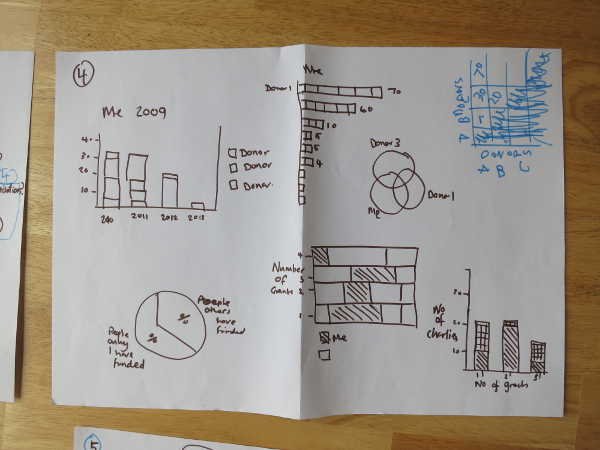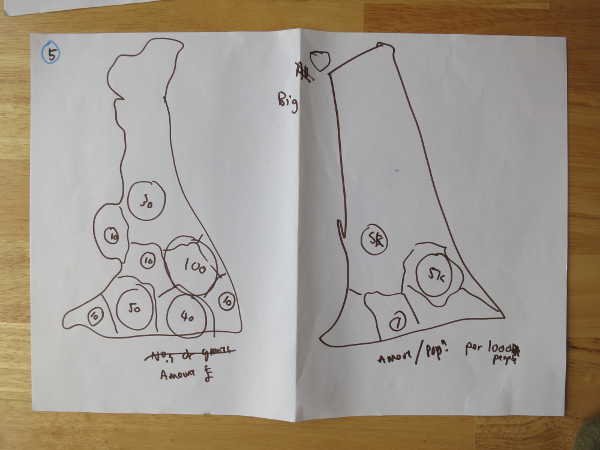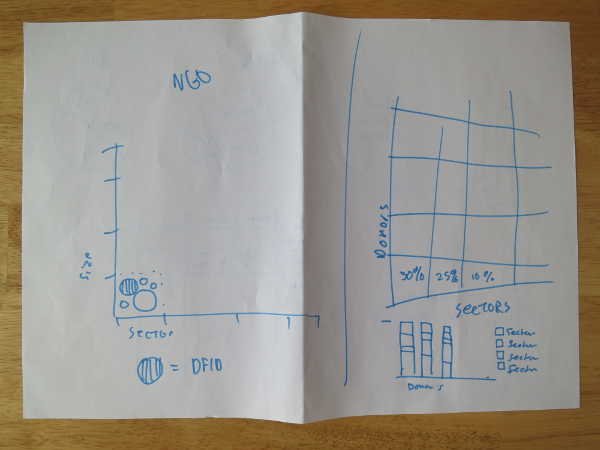User centered design for a data centric project
A vital step in any design process is to think about the end users. At the end of a project it would not have been a success if the users are not engaged or the user experience has not been enhanced. Therefore it is impossible to make design choices without an understanding how this will affect the end users. At aptivate, in order to make sure we are equipped to make choices on behalf of the users we aim to make project participatory, involving users through the process and creating the best understanding of them we can.
The first questions we ask are: who are the users? what are they like? what they are trying to do? and what might be helpful for them? This helps us shape the initial aims of the project and help us understand how we can design something that works.
We have started thinking about this as one of the first steps in our work with Indigo Trust for 360 Giving . They have collected a limited amount of data any we were wondering, who wants to see this information? and what questions they might be asking? We start to answer these questions by thinking about the key user groups.
User group 1: NGOs
People looking for a grant to help fund their NGO activities. This group has a very obvious trigger that would lead them to information that could be provided by this open data. They want to find out about who might fund them and how much funding to ask for. These are are questions we think they could be asking.
Who should I apply to?
Who gives out grants?
How long is the application process?
Where does the money come from?
Who gives to my kind of activity (what is the donors focus?)
What kind of grant application would be most likely to succeed?
What is that application success rate?
How much should I apply for?
User group 2: Philanthropists
Funding organisations who are giving out grants. This is the key audience we are trying to impact. In order for the 360 giving project to succeed it’s vital that this group see the value in providing their data in an open way. Here’s a few questions that we think Philanthropists are asking, that the data might be able to help answer.
Looking back on what they have done
Who have I given money to? and how much?
What’s the make up of my portfolio?
Measuring impact and checking due diligence
How are the people who I have funded doing?
Am I giving money to good organisations?
Who else have funded the people I have funded?
Moving forward, what to focus on next
Which other donors have the same focus and as me? Who should I coordinate with?
How can I encourage applications of the right sort?
What is the geographic distribution of my grants? Am I missing any major areas?
What is the thematic distribution of my grants? Do I give too much to a particular type of activity?
Brainstorming these questions allowed us to start dreaming about ways to display the data and things we could show these two user groups to help them make useful choices. See a couple of our initial sketches below. Thinking about the users in this way ensures that we approach the project from the point of view of the users rather than getting caught up in the data and being too focussed on what the data can show.
As we continue to work through the project we are hoping it will be possible to speak to people from the user groups and get further insight into what information would be inspirational. If you think you fit one of these groups and would like to help out, get in touch with us at indigodata-team@aptivate.org
We are now working on some demonstrations using the data that has been collecting so far. We are hoping to create some compelling examples of how the data can be used to help philanthropists do their work more efficiently and therefore understand what the possibilities are if they start sharing their data openly.



